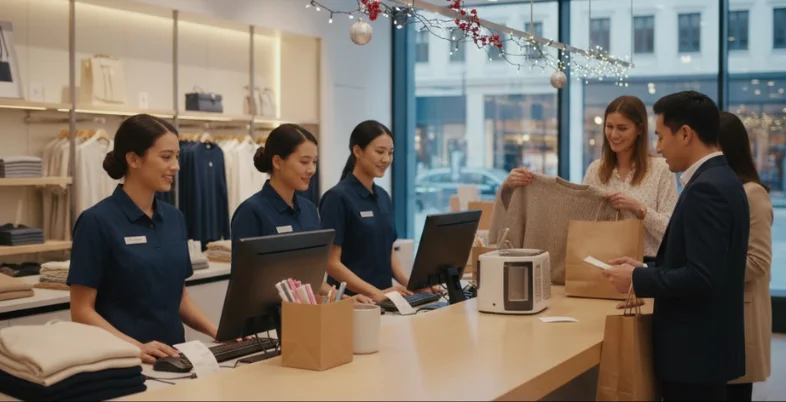How Post-Holiday Returns Will Define Retail Winners

Every January tells the real story of the holiday season. It’s not told through sales numbers but through what comes back. The flood of returns reveals which retailers have systems, flexibility, and foresight to protect margins and keep customers happy. Product categories expand constantly and consumer expectations for easy returns keep rising. Brands that treat reverse logistics as competitive advantage instead of necessary evil stand apart from everyone else. Return handling makes or breaks retail performance, transforming a seasonal challenge into lasting competitive strength.
Retailers that view returns strategically gain insights most competitors ignore. Return data reveals product problems, shipping issues, and customer preferences that forward inventory and merchandising decisions. That information becomes proprietary advantage when used correctly. Retailers seeing returns as merely expensive problems miss opportunities that strategic retailers capture. The difference in outcomes compounds across seasons and years.
Understanding how return handling shapes customer satisfaction, loyalty, and brand trust means recognizing that the shopping journey doesn’t end with purchase. It continues through returns, exchanges, and customer service interactions. Retailers mastering post-holiday returns create systems that make those interactions frictionless and even positive. That experience converts one-time buyers into loyal repeat customers who trust the brand with future purchases.
Why Returns Are the Real End of the Shopping Journey

Returns represent continuation of sales relationships, not undoing of them. How retailers handle them determines whether customers feel respected or frustrated. Frictionless return experiences lead to repeat purchases because customers feel confident making buying decisions. They know that if something doesn’t work out, returning it will be easy. That confidence drives purchasing behavior. Poor return processes create opposite effect where customers become hesitant buyers afraid of being stuck with wrong items.
Customer satisfaction with returns experience influences overall brand perception more than many retailers realize. A single bad return experience can outweigh ten positive shopping experiences. Customers who struggle with returns feel disrespected and undervalued. They share negative experiences with friends and online communities. That word-of-mouth damage compounds into lost future sales beyond the individual transaction. Retailers understanding that impact prioritize return experiences as central to brand strategy.
Brand trust builds through consistent, positive return experiences. Customers who return items and feel treated fairly become more loyal than customers who never need returns. That loyalty translates into higher customer lifetime value and more referrals. Retailers investing in excellent return processes build trust that competitors can’t easily replicate. That trust becomes sustainable competitive advantage because it’s based on actual service delivery, not marketing promises.
Operational Agility as a Competitive Edge
Post-holiday volume tests every supply chain element simultaneously. Leaders invest in clear labeling, automated authorizations, and predictive demand forecasting because they understand that peak season reveals operational weaknesses. Flexible systems handle volume spikes without breaking down. Warehouse visibility allows retailers to see exactly where inventory is and what condition it’s in. That visibility lets them process and restock items faster, minimizing markdowns that destroy margins. Speed advantage during returns season becomes competitive advantage that extends throughout the year.
Infrastructure investments in return processing pay returns throughout the year, not just during peak season. Automated systems that handle routine authorizations and restocking work year-round. Return process efficiency that improves during peak season becomes permanent operational improvement. Retailers lacking that infrastructure face bottlenecks that create delays, damaged inventory, and costly markdowns. Those operational disadvantages compound across multiple return cycles.
Predictive demand forecasting based on historical return patterns allows retailers to prepare inventory positions before returns peak. Understanding which products return most frequently enables better initial inventory management. Forecasting which items will need refurbishment versus resale guides resource allocation. That preparedness means retailers handle peak return volume smoothly while less-prepared competitors struggle. Preparation advantage translates into faster processing, better inventory recovery, and protected margins.
Turning Data into Strategy
Return reasons reveal product and process problems that other data sources miss. Wrong size returns indicate that sizing guidance was inadequate. Damaged goods returns reveal shipping or packaging vulnerabilities. Buyer’s remorse returns suggest product descriptions were misleading or photos weren’t representative. Each return reason provides diagnostic information about what needs improvement. Retailers that analyze those patterns identify weak products and fix root causes. Those that ignore patterns keep seeing same problems repeatedly.
Analytics capabilities that identify return patterns create competitive advantage through continuous improvement. Top retailers now use machine learning to spot subtle patterns that human analysis might miss. They identify which suppliers consistently ship damaged goods, which products generate returns disproportionate to sales, and which customer segments return most frequently. That information guides supplier negotiations, product sourcing changes, and targeted quality initiatives. Data-driven decisions produce better outcomes than intuition-based guesses.
Return data informs merchandising strategy and supplier relationships in ways that sales data alone can’t. Products generating excessive returns need better descriptions or different supplier. Customer segments with high return rates need different product recommendations or sizing guidance. Suppliers providing low-quality goods need replacement or process improvement requirements. That strategic use of return data prevents future problems rather than just managing current ones.
Conclusion
The next wave of retail winners won’t be defined by sales spikes but by how efficiently they recover from them. Streamlined return logistics, transparent policies, and data-driven improvements transform returns from liabilities into opportunities. That transformation doesn’t happen accidentally, it requires intentional strategy and continuous investment.
In an era where convenience defines loyalty, mastering post-holiday returns becomes essential competitive competency. Customers expect easy returns with minimal friction. Retailers delivering that experience build loyalty that competitors can’t overcome. That customer preference makes return experience central to retail strategy.
Retailers starting 2025 with strategic return management systems will outperform competitors lacking that capability. Post-holiday returns separate winners from everyone else by revealing which organizations run efficiently and which ones struggle. That competitive sorting happens every return season and compounds across years.
